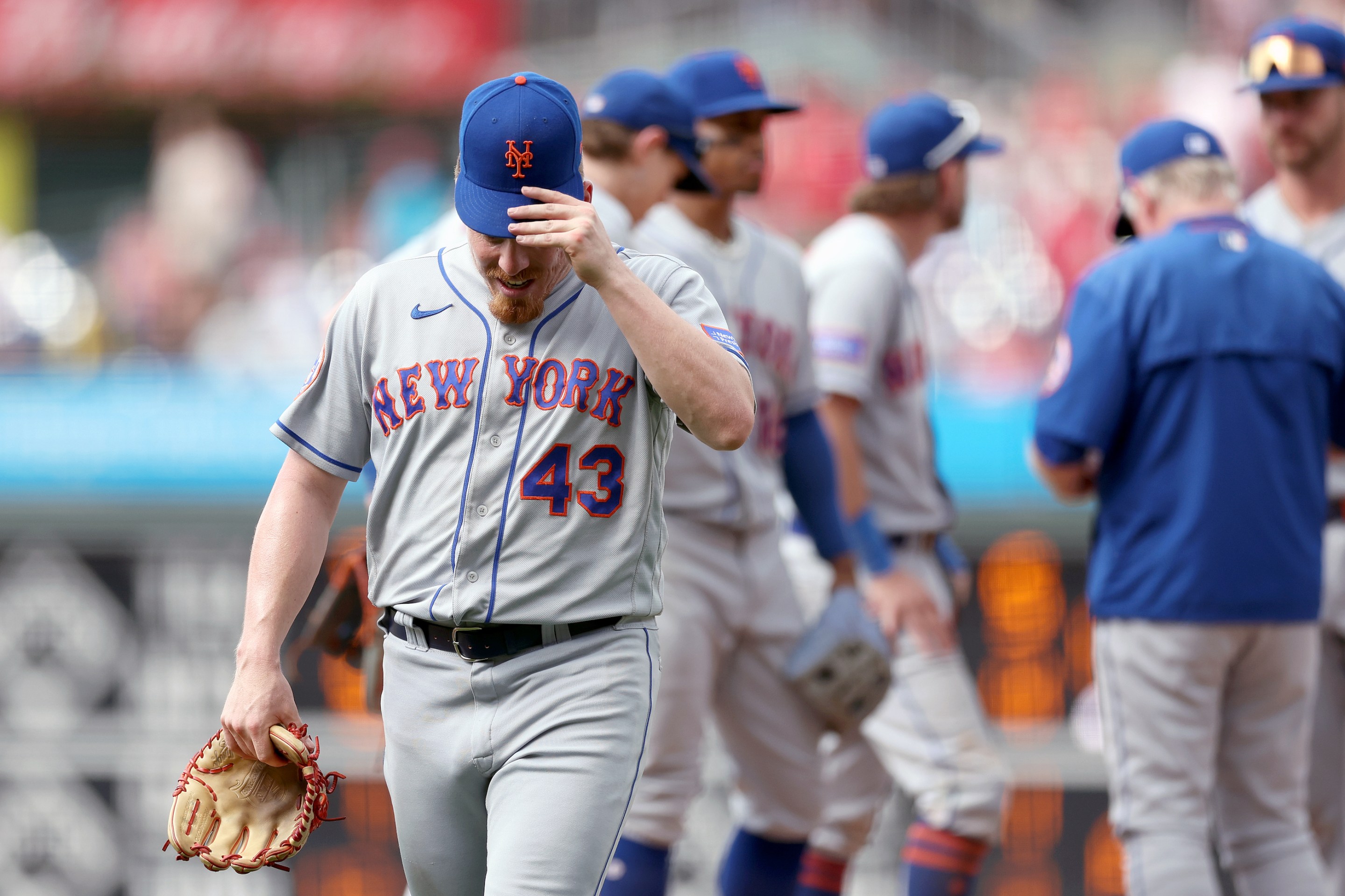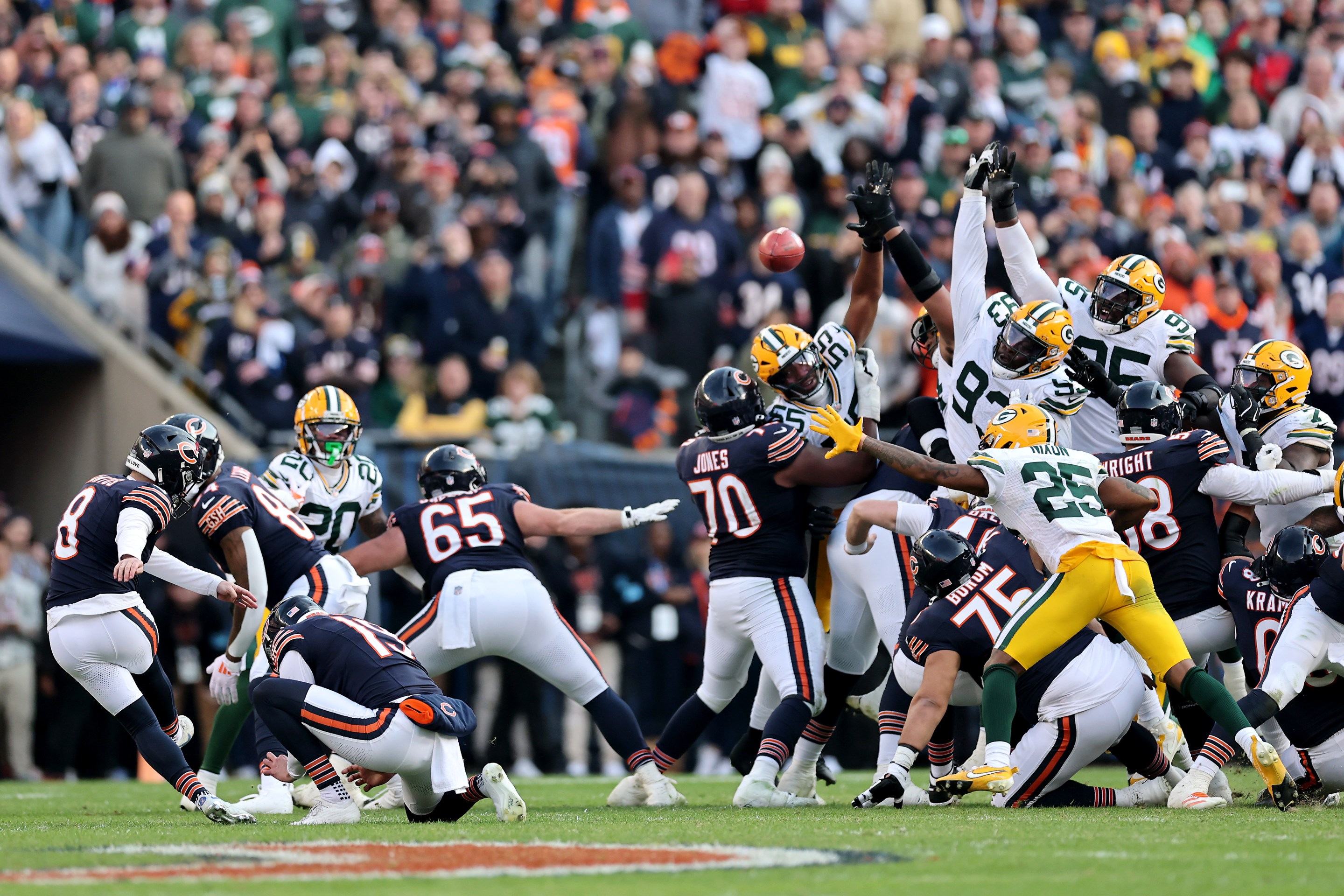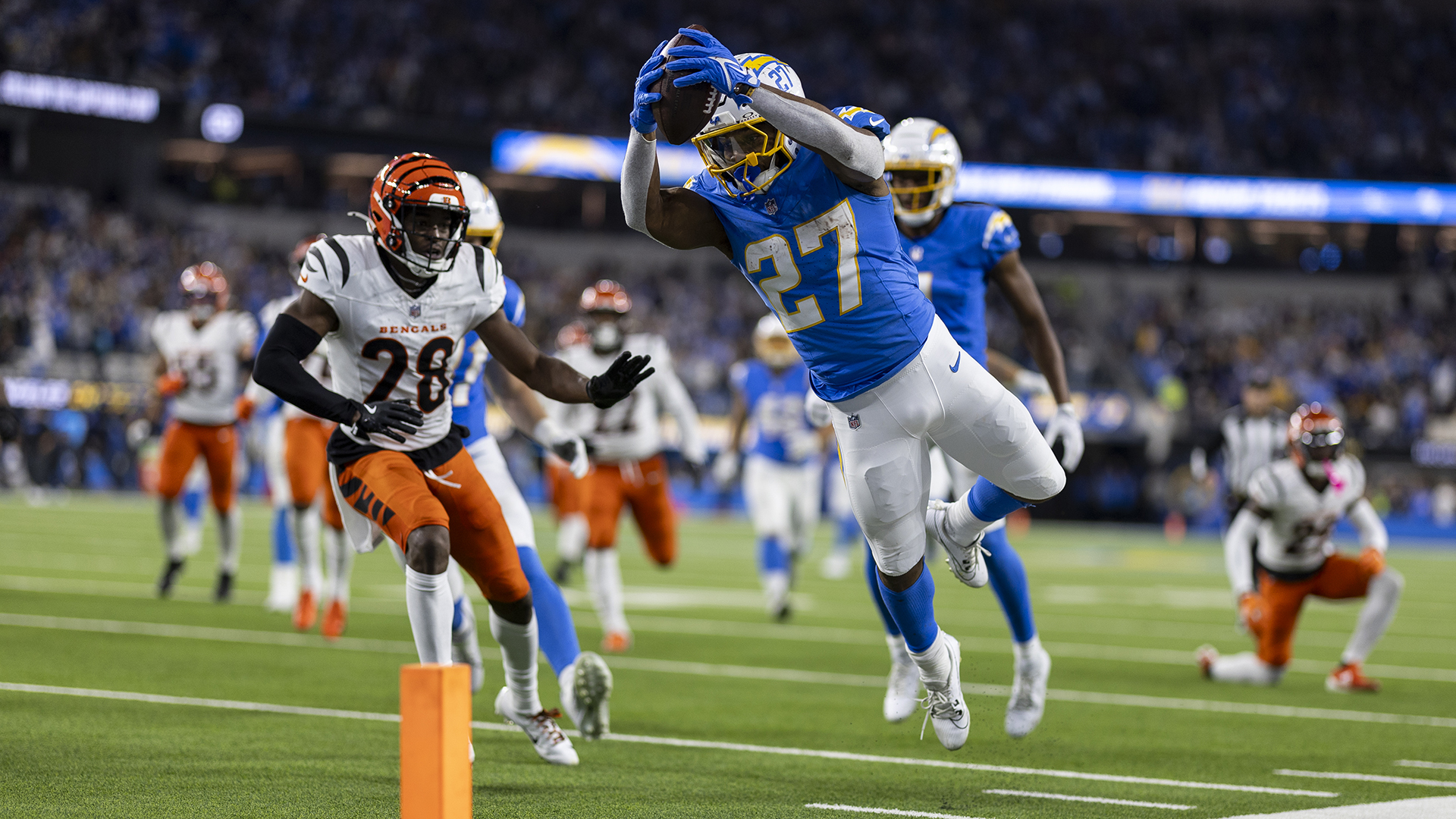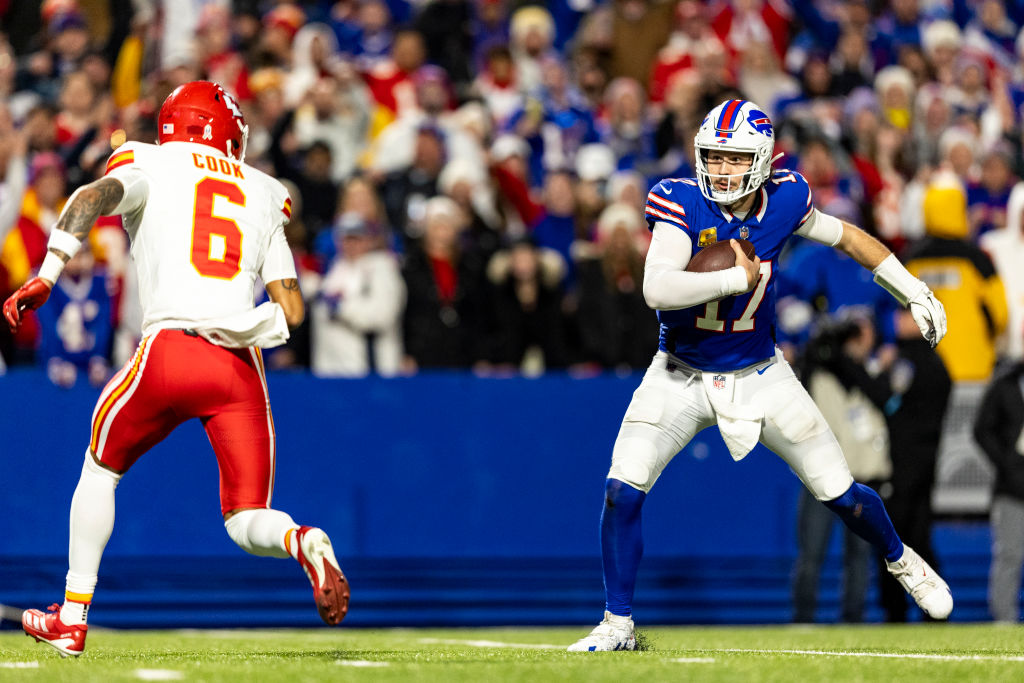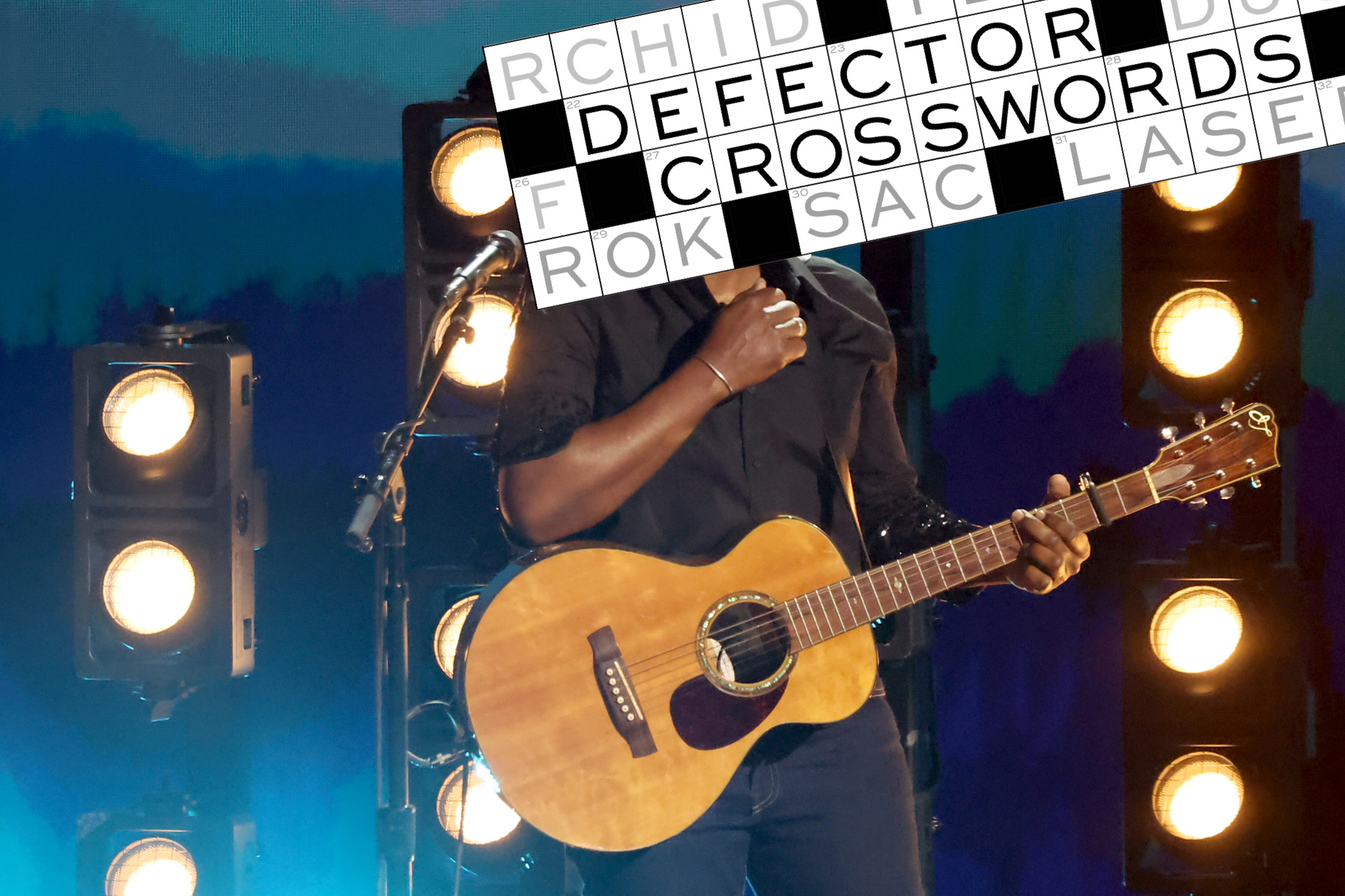A 28-year-old reliever in his seventh big-league game loads the bases late against a divisional rival before being relieved by a second pitcher, who was acquired during the offseason at least in part because he could be optioned to the minors; both of them have been Peter Principled by roster attrition and salty managerial whim into a higher-leverage spot than they should occupy; neither of them are nearly at their best. You do not even need to know that the Mets are involved to know that this is bad, and will go badly.
In a brutal collapse on Sunday afternoon, it did. There are only so many ways to parse the classic "lost the game on back-to-back bases-loaded hit-by-pitches" scenario; Mets manager Buck Showalter's note that the team "almost won" is probably the least convincing of those. When the loss was finally in the books, play-by-play announcer Gary Cohen said "the Mets' 42nd loss of the season was their most horrific." That was a bit more like it.
It is taking nothing away from how horrific that extremely horrific Mets defeat was to note that, the baroque slapstick of its particulars aside, it mostly felt familiar. Their 43rd, a limp 2-1 loss to the Brewers on Monday night, was by comparison relatively prosaic, although in both cases the bullpen burped up a lead. Despite running the highest payroll in the history of the sport, and despite returning most but not quite all of the most important players from a team that won 101 games just last year, the Mets have been one of the very worst teams in Major League Baseball over the last two months. They were 14-7 on April 22; they have gone just 21-36 since, worse than any team besides the actively on-fire A's and Royals. During that time they were swept by the Tigers, they dropped series to the Rockies at home and in Colorado, and to the Pirates and the Cubs, and to the pre-Ellyssance Reds and the Cardinals. Not all of those teams are quite as bad as their records make them look, but all of them looked and played better than the Mets.
It is true, or anyway a truism, that a team can't win a pennant in June, but it can absolutely lose one. If it's still too early to say that giving away a month of games against losing teams (and winning ones: the Mets were also swept by the Braves and Blue Jays during this slide) will cost the Mets down the line, they have not looked or played like a team that belonged in even the most expansive postseason conversation. At the moment, they're not—they're 16 games behind in the NL East, 8.5 back of the hindmost wild card team, and defiantly out of answers. They lose, as often as not due to mental or fundamental mistakes but sometimes just because the pitching is bad, and then the players take responsibility and the manager very pointedly does not, and then they generally lose again. The vibes are appalling; asked who would start for the team on Tuesday, Showalter responded by asking the assembled press whether they were curious about "when you're going to die." None of it is what you want.
Before they started tipping into coded messages of despair, Showalter's postgame statements were mostly aimed at projecting steadiness and the absence of panic. That mostly scans as trolling at this point, but given that the organization is ostensibly in the middle of an overhaul, there's a case to be made for a longer view. Mets owner Steve Cohen was reportedly the runner-up for the Los Angeles Dodgers when they were sold in 2012, and he has been open about following the model that the Dodgers have followed during their decade of uninterrupted success since that sale. Given where the Mets were when Cohen took control, rebuilding the organization in that image was a massive undertaking. As far as anyone knows, that work is continuing. At the moment, it's hard to tell.
It's easier to describe than it is to pull off, but the Be The Dodgers model looks more or less like this: Spend big and decisively on big-league talent right away, while also doing everything possible to make every player-development element of the organization state-of-the-art. In the near term, the roster may be top-heavy and expensive, but it will be competitive; in the longer term, all that forward-thinking player development and coaching will both produce younger talent and rehabilitate under-the-radar contributors to balance out the roster, and those new contributors can either replace expensive stars as they age out or be swapped for more top-of-the-market talent. In the longer-than-that term, if done right, that cycle looks like a perpetual motion device: The winning practices maintain themselves and become a shared institutional habit, to the point where the manager or players really and truly might not sweat a losing streak because they know that they are good, and that they are surrounded by people who will help them fix whatever is wrong and improve whatever is lagging. Do it for a decade, and it sells itself.
For industry-leading teams like the Dodgers and the Giants, the difference-making breakthrough is not some abstruse proprietary technology or algorithm-aided methodology brought to bear by a cadre of MBA types. That technological stuff runs through it all, but the best teams integrate it through smart, adaptive, detailed coaching that works with players to make it all comprehensible, and then practicable, and finally just habit. Rich people, especially finance creatures like Cohen, tend to be enamored of big data, both because they like things that are big and because they are attracted to cold stainless surfaces. But at this point in baseball's information age, that information is available to every team that cares to know it. The real difference is between the teams that know what to do with it and those that don't.
This is not just about understanding all that information in an integrated and coherent way. If the last revolution in baseball was about refining organizational processes, the current one appears to hinge on the comparatively unsexy realm of operations—making all that complicated stuff simple enough to work from one level and one player and one moment to the next, and then applying it over and over again. Some of that progress can be bought, but the last and hardest and seemingly most important bit happens at a more human scale. All that big data has to be made small enough to benefit individual players. This, as much as anything else, is how teams get and stay good—they make their players better. A team that can't do that would not only have to shop at the top of the market until they can figure it out—this is about the Mets again, by the way—but it would also be very vulnerable when it encounters even the level of turbulence that could be described as "normal baseball shit." Picture a closet full of elegant and expensive suits, made to measure for a man who is terrible at tying his shoes.
When the Mets acquired J.D. Davis from the Houston Astros before the 2019 season, they presumably knew what they were getting. He was a big-league talent with an obvious pedigree, but blocked in a juggernaut of an organization; he'd won a minor league batting championship. The Mets were hopefully aware of his useful tools and exploitable deficits, and made their move with that in mind; the lower-level prospects they dealt, about whom we can assume those Mets knew very little, haven't really panned out, and so in a sense they won the deal. But when the Mets dealt Davis to the Giants at the deadline last year, in a trade for a 35-year-old outfielder who put up a .413 OPS in 78 plate appearances before being released, he was still precisely the sum of those parts. That batting title was a little further in the past, the tools and deficits a bit better understood but otherwise utterly untouched, and whatever latent potential he had was still wholly latent.
Davis has not really become a star with the Giants, although his .285/.364/.469 would make him one of the best hitters in this Mets lineup. The strange part, as Grant Brisbee detailed in The Athletic earlier this year, is that Davis has become an extremely good defensive third baseman, thanks mostly to some smallish coaching tweaks—a narrowing of his defensive stance, an emphasis on getting rid of the ball quickly and trusting his powerful throwing arm. Turning a fringe DH into a valuable all-around contributor was a huge organizational win for the Giants, but there was nothing miraculous about it. It was a matter of individuated coaching and some patience and faith in a player who hadn't previously enjoyed much of either. "When it comes to players who are so talented that they get to join the ultra-elite club of major-league baseball players," Brisbee wrote, "maybe assume that the ceiling is generally higher than you might expect when it comes to potential improvements."
What unites all of the most effective organizations in baseball, from the Dodgers on down to ruthlessly optimized Rays, is not just the ability to identify and unlock those kinds of improvements but the willingness to do that work anywhere and everywhere that it can be done. Especially for cheaper teams, this often amounts to noticing one outstanding attribute in an otherwise unremarkable prospect and then rebuilding that player's game around it. This is difficult, and not inexpensive, but it's far cheaper and more efficient than paying the market rate for mid-career free agents. Identifying those valuable tools is something that even bad teams can do, if only because there are numbers associated with it; that is just a matter of data. The harder part is harder, and stubbornly human. Every team understands that, difficult as it is, it is also more cost-effective. But not every team knows how to do it well.
All of which is to say that even the Mets can assess what a player like J.D. Davis (or whoever) can do, attribute by attribute. Even the Mets can claim a minor-league reliever whose fastball spins in unusual ways, or draft a pitcher with a big slider, and even the Mets can tell that those pitches could be useful. But what they have traditionally not been able to do is help those players learn how to make those potentially useful tools into actually useful weapons. Under the Mets' self-spiting previous administration, which was defined at every level by high-handed bullying and backwardness, that baseline apathy-unto-antipathy toward player development seemed almost to be a matter of principle. If it's too soon for the same kind of thumbnail psychoanalysis of Cohen's administration, it's not too soon to say that the results look familiar.
This was always the more challenging part of the team's Be The Dodgers plan, and one that would necessarily take longer to implement even if the organization had been more committed to getting rid of the previous administration's barnacles than it has been. While Cohen has unquestionably delivered by spending on free agents, there's no real evidence that the other, harder work has begun. The farm system remains atomized and entropic: If there are coaches capable of, say, teaching a stymied relief prospect a new slider, that work is not yet paying any evident dividends in terms of exciting pop-up prospects, or even contemporary pitch design. The new ways to lose that the team seems to discover weekly are, upon closer examination, just familiar unfixed problems assuming strange new configurations under pressure. What is either a lack of capacity or a simple lack of interest compounds and compounds.
From there, it goes how it always goes. Management blames the players when things go wrong; players blame themselves; the mood curdles, little by little and then all at once, as it becomes clear that no one cares to fix what's breaking or broken. This is not just a baseball thing. The idea that the inconvenient and expensive labor-intensive aspects of production could somehow be refined and refined until they simply produce a clean and optimized product on their own is both pure capitalist alchemy and one of the enduring delusions of our age. Baseball always returns to the executive fantasy that the game can be perfected by people other than baseball players, or somehow be made to exist by other-than-baseball means. This persists even as it becomes increasingly obvious that those highly refined processes are meaningless if they cannot be understood and reproduced by the people tasked with making it all real on the field, and whose labor is the league's product. There is no way to make any of this work without people—people teaching, people learning, people doing. So much more is understood about baseball now than has ever been understood in the past, but somehow the fact that the game is work arrives as a surprise every time.
